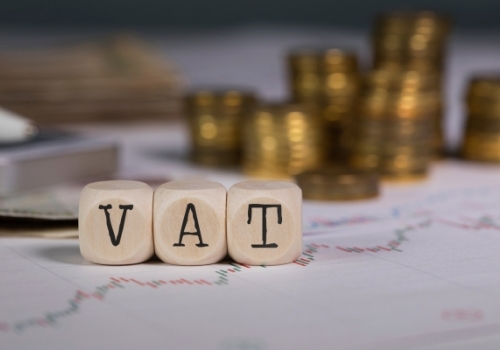VAT Paid Status: Golden Ticket or Hidden Trip Wire?

“’Tis impossible to be sure of anything but death and taxes.”
Those words were first written by Christopher Bullock back in 1716 and they have stood the test of time, via Benjamin Franklin in 1789, ringing true over 300 years later.
When we talk about most yachting activities in and around the EU, the subject of tax (in particular value added tax, or VAT) is never far down the agenda.
VAT can be payable on the value of the hull itself, on all goods and services procured during a yacht’s operation, and when chartering a yacht.
In this article, we focus only on VAT payable on the value of a yacht’s hull – what it is, how it usually arises, and whether it needs to be paid.
What is VAT?
The acronyms vary from country to country, but whether it’s VAT, IVA, or TVA on the bottom of a quote or invoice, we’re talking about value added tax.
VAT is a consumer tax which applies to almost all commercial activities where the end user of a supply of goods or services is a consumer.
While businesses may also have to pay VAT on the goods and services they procure (input VAT), if they are VAT registered, they can deduct that amount from the VAT they have charged their customers (output VAT), such that it is always the end-consumer effectively paying the VAT.
VAT is charged as a percentage of the price paid for goods or services. Under EU law, the standard rate of tax must be no less than 15 per cent, and we often see it hovering around the 20 per cent mark in most countries. At the time of writing, the lowest standard VAT rate in the EU is 17 per cent in Luxembourg, with Hungary topping the charts at 27 per cent.
When is VAT paid?
VAT is payable as the result of a chargeable event. Defined in Council Directive 2006/112/EC, most chargeable events arise when there has been: (a) a sale/purchase of goods; (b) a supply of services; or (c) the importation of goods.
Once VAT paid, always VAT paid?
One of the most common misconceptions across the superyacht industry is that once you’ve paid VAT on a yacht, you always have a VAT paid yacht.
Unfortunately paying VAT is not necessarily a one-time-thing. The same yacht can attract multiple VAT liabilities throughout its lifetime, so diligent planning is essential to ensure you do not inadvertently create unnecessary VAT liabilities.
In the context of a superyacht, particular care should be taken when purchasing ‘VAT Paid’ yachts. This term is used generically across the industry, and not always accurately.

Here are a few (non-exhaustive) examples of when a yacht, in the absence of other factors, would be considered VAT paid:
-
Classic yachts – private yachts build before 1985 and demonstrably located within the EU on 31 December 1992 are assumed to be VAT paid.
-
New build - a new private yacht purchased from the builder in the EU where the buyer has paid VAT on the full purchase price and keeps the yacht in the EU forever.
-
Brokerage sale – an existing EU yacht which was not already VAT paid (perhaps because it was operated commercially by the seller) is bought within the EU without corresponding export, and VAT is paid by the buyer on the full purchase price, where the purchase price corresponds with the market value.
-
Import – a new or existing yacht, purchased outside the EU is permanently imported into the EU as a private yacht, with VAT on the full market value of the yacht paid upon import.
While each of these examples would most likely constitute VAT paid yachts, they are all liable to lose that status if, for example they are:
-
Operated commercially and VAT was recovered during their operational lives.
-
Exported from the EU and ineligible for returned goods relief on future re-importation.
When is VAT payable?
In short – VAT is always payable unless it is not by operation of an exemption.
When building, buying or importing a yacht it is important to seek legal and tax advice to ensure no surprises lurk around the corner.
In many instances there are established exemptions which may apply depending on the circumstances.
One such well known and well-established exemption is temporary admission. Under temporary admission, a non-EU yacht may operate privately within EU waters for up to 18 months without paying any VAT on the hull. There are a number of further requirements which must be complied with, and if these are not followed, or if the yacht does not leave EU waters in time, a VAT liability would arise.
Similarly, exemptions apply for non-EU commercial yachts provided the yachts are operated truly commercially in accordance with the rules of the exemption. One of the better-known mechanisms was the French Commercial Exemption, now replaced with the reverse charge mechanism.
Is anyone really checking?
Yes.
We have all heard stories of commercially registered yachts which have never undertaken a paid charter – the truth of the matter is that in the earlier years of the superyacht industry there was no shortage of owners being advised to structure their yacht ownership in such a way so as to enjoy the ‘VAT perks’ of commercial registration without anything close to true commerciality in the venture.
I am pleased to have seen a shifting in the tide in recent years and, while this (abusive and illegal practice) no doubt continues to be promoted by a minority, most modern superyacht advisors demonstrate a more responsible approach when advising clients on their tax liabilities.
We have also seen a noticeable surge in enforcement activities by the customs authorities of several EU member states in recent years – in particular France and Italy.
This is no wonder, when you consider that a non-VAT paid yacht worth €100,000,000 may be a €20,000,000 sitting duck for the customs authorities (and that’s before you add penalties and interest).
Realistically speaking, if the authorities conclude that an owner has not paid VAT when it ought to have, it is likely that they will face an order for payment of the VAT (usually based on the hull value when the yacht was bought or imported), penalty charges up to 100% of the VAT liability, and interest from the date VAT should have been paid.
We have also seen yachts being confiscated by authorities, in which case you may find yourself on the receiving end of a hefty VAT bill for a yacht you no longer technically own.
Gone are the days when you could call a yacht commercial and pay no VAT. Yacht owners need to consider carefully how they wish to use their yacht long before they step foot on board, and work with their team of advisors to ensure that the correct and legitimate steps are taken to manage their VAT risk appropriately.
Advisors to yacht owners also need to take responsibility for checking any purported VAT paid status when their client is buying a ‘VAT paid’ yacht – it simply isn’t good enough to see that some VAT was paid at some point in the yacht’s life. One must consider whether the documentary evidence provided demonstrates whether any VAT was ever paid, was it paid on the correct yacht, was the correct amount paid, has any or all of the VAT paid been recovered by a subsequent owner, has the yacht been exported and reimported without returned goods relief?
The process of checking VAT paid status can be arduous, but it is essential for the owner's quiet enjoyment of their yacht for years to come.
In many instances there are perfectly legitimate and established mechanisms within EU VAT law which will allow an owner to enjoy the ownership of a superyacht without incurring a significant VAT liability. However, the applicable rules must be followed, and an owner must be fully informed of the consequences of their intended use of their yacht.
Ultimately, if an owner’s intended use of their yacht does not fit within a legitimate exemption, VAT must be paid – end of discussion.
Read more from Dom Bulfin here:


Post your comment
You cannot post comments until you have logged in.
Login to post a commentComments
No one has commented on this page yet.
RSS feed for comments on this page | RSS feed for all comments